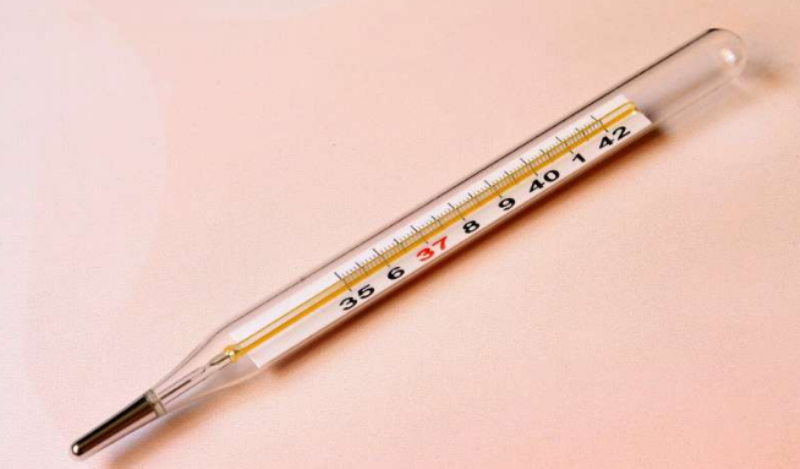
Fever is also known as hyperthermia or pyrexia but commonly we use the term fever. It is a temporary increase in your body temperature due to illness or in layman’s language we can say body temperature that’s higher than normal temperature i.e around 98.6°F or 37°C. Fever generally goes away within few days but if it doesn't then it’s a matter of concern. If we are having fever it doesn't mean that we are ill, sometimes it seems to play a key role in helping your body fight off a number of infections mostly in adults but if it reaches 103 F (39.4 C) or higher then you need medical treatment.
Causes of fever
A fever is not usually a problem itself, but symptom of another condition. It indicates that there is something wrong with some body part. As one researcher justifies, "The febrile response is orchestrated by the central nervous system through endocrine, neurological, immunological and behavioral mechanisms. It can help the body fight infection, because it increases the amount of antiviral and anticancer interferon in the blood. This makes it difficult for bacteria and viruses to replicate in the body. Sometimes it occurs during the change of weather. Whenever the weather changes, the body's immune system becomes a little weak due to the temperature fluctuations, causing the body to be infected by the virus.
Conditions that causes fever
Infections are the most common cause of fever, but various conditions and illnesses can raise the body temperature.

These include:
-
Infections due to infectious diseases such as influenza, infectious mononucleosis, common cold, HIV, malaria and gastroenteritis.
-
Legal and illegal drugs such as antibiotics, amphetamines, and cocaine.
-
Trauma or injury which includes a heart attack, stroke, heatstroke, heat exhaustion, or burns.
-
Damage to tissue like breaking open of red blood cells to release haemoglobin, surgery, heart attack, crush syndrome, and hemorrhage
-
Other medical conditions means cancers, lupus, inflammatory bowel disease, blood clots, metabolic disorder, gout, and embolisms
Some drugs such as Antibiotics, narcotics, barbiturates, and antihistamines can cause "drug fevers" due to adverse reactions because of the design of the drug.
Types of fever
Fevers can be classified into different ways:
I.Length of time: It means how many days you are having fever
-
Acute: Having fever less than 7 days like Respiratory tract infection.
-
Sub-acute: Lasting upto 14 days like Typhoid.
-
chronic or persistent : fever more than 14 days as in tuberculosis etc
II.They can also be classed according to seriousness:
-
low grade
-
moderate
-
high
-
hyperpyrexia
III. Sustained, where it does not increases more than 1.5 °F (1 °C) over 24 hours, but is never normal in this time, likeTyphoid.
IV. Intermittent, when the fever occurs for several hours in the day or many times a day , but not all the time, likeTuberculosis
V. Remittent, when it swings by more than 2 °C but does not become normal, such as infective endocarditis.
VI. Fevers of undetermined origin (FUO),these are those that exist for days or weeks with no explanation.

Symptoms
A fever is itself a symptom, but it can occur with its own symptoms and with other symptoms.
Some common symptoms are
-
High temperature i.e more than 6°F or 37°C
-
Shivering and shaking
-
Excessive sweating
-
Skin flushing
-
Palpitation
-
Feeling weak
-
Dizzy or faint
Body temperature reading vary so doctors look for other signs sickness which are :
-
Lack of energy
-
Depression
-
Low food intake (low appetite)
-
falling sleep all the time (sleepiness)
-
Concentration
Range
Normal body temperature is 98.6–100.4 °F or 37-38 °C.
Mid- to low-grade fever 100.5-102.2°F or 38.1-39°C
Moderate-grade fever 102.2-104.0°F or 39.1-40°C
High-grade fever 104.1-106.0°F or 40.1-41.1°C
Hyperpyrexia over 106.0°F or over 41.1°C
How is body temperature measured?
Body temperature is measured from Mouth, Armpit , Anus, Vagina or Ear.
So, measurement of these areas differ from each other like Average temperature of Anus, vagina, ear is 99.6°F (37.6°C) and Fever Temperature is 100.4°F (38.0°C). Mouth Average temperatue is 98.2°F (36.8°C) and Fever temperature is 99.5°F (37.5°C) and Armpit Average temperature is 97.6°F (36.4°C)and Fever temperature is 99.0°F (37.2°C).

Home remedies and treatment
If you are young and are having fever you should see a doctor, but older children and adults do not always need to do this. They should rest and remain hydrated. Adults may take acetaminophen, ibuprofen, or aspirin to reduce the temperature.
Home remedies are :
-
Remove some clothes
-
Take a cold or ice water bath
-
Dip a cloth in ice chill water or water and put it on forehead
-
Decrease the temperature of your room or make your room cool by using fan
-
If a child whose age is between 0-36 months, His/Her parents should consult doctor.
Note : Aspirin is not suitable for children due to the risk of Reye's syndrome.
Fever is easy to measure but it is difficult to determine its cause.















